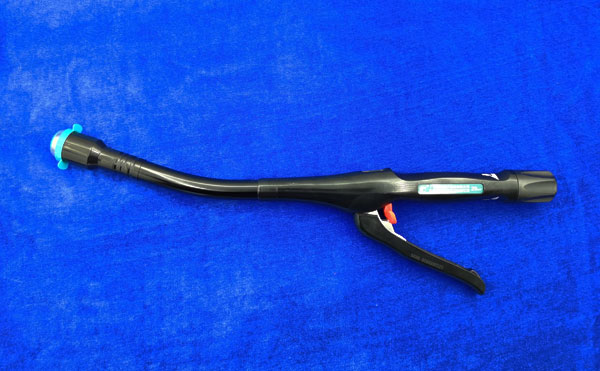The purpose of tubular stapler:
Strictly speaking, the staplers used for various lumen anastomosis are basically called tubular staplers.
The tubular stapler is called a tubular type because when it enters and exits the tissue, it will form two rows of interlaced staples in a circular arrangement, and then use a ring knife to cut off the inner tissue. The organs can be anastomosed quickly and easily.
All in all, the use of tubular staplers is mainly used for the anastomosis of tubular organs. Different sizes of staplers are suitable for different operations. For example, 21, 23, 26, 29 are mostly used for esophagus and small intestine surgery, and 32, 34 are mostly used for colon. And rectal surgery.

How to use the tubular stapler:
1. Choose a suitable stapler;
2. Turn the adjusting nut counterclockwise, open the nail seat, and take out the protective cover until the nail seat is completely opened;
3. Rotate the adjustable knob counterclockwise until you see the red knotted area of the built-in puncture device, then pull out the abutment base, and turn the adjustable knob clockwise so that the built-in puncture device can be completely received into the body of the stapler among;
4. Place the removed nail seat into the end of the lumen to be anastomosed that has been sutured, and then tighten the purse-string risk at the knotted groove of the nail seat, and trim the excess tissue edges;
5. Place the stapler into the other end of the lumen to be anastomosed, and turn the adjustable knob counterclockwise so that the head of the stapler built-in trocar breaks through the closed lumen, knowing that the red knot on the back of the trocar can be clearly seen area;
6. Put the anvil head of the stapler in and push it in until you hear a "click", perform the stapler alignment, adjust the organizer tube, and close the stapler;
7. Tighten the stapler until the indicator window of the stapler jumps;
8. Confirm whether the stapler is in place;
9. Rotate the body of the stapler while exiting;
10. Confirm whether the excised tissue is intact and whether there is any abnormality in the suture site. If any abnormality is found, it should be dealt with in time.
Post time: Dec-24-2021





